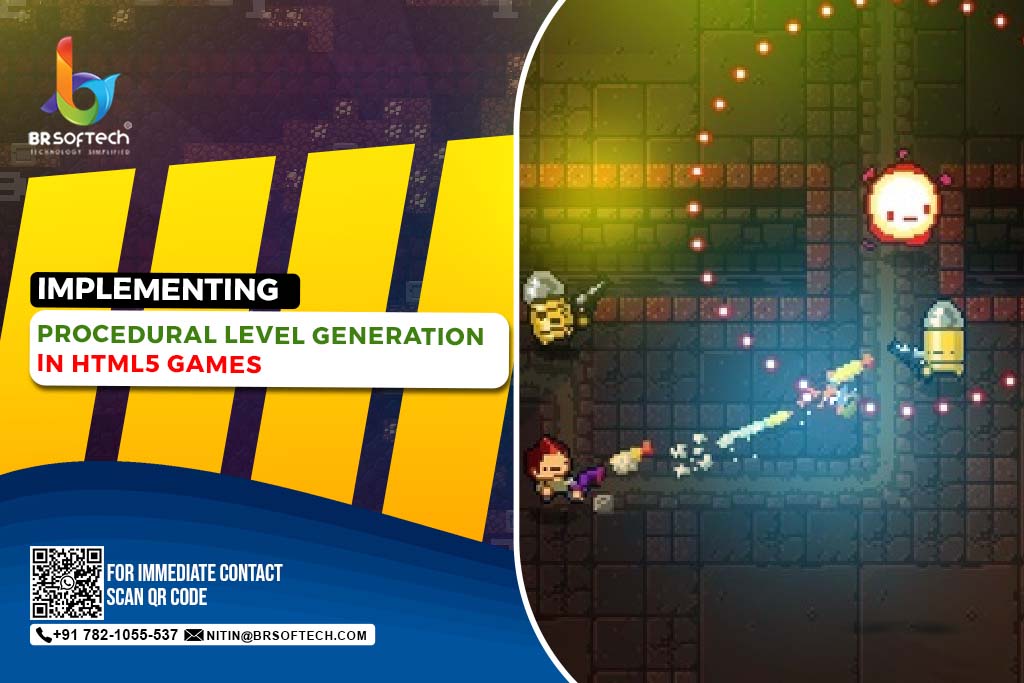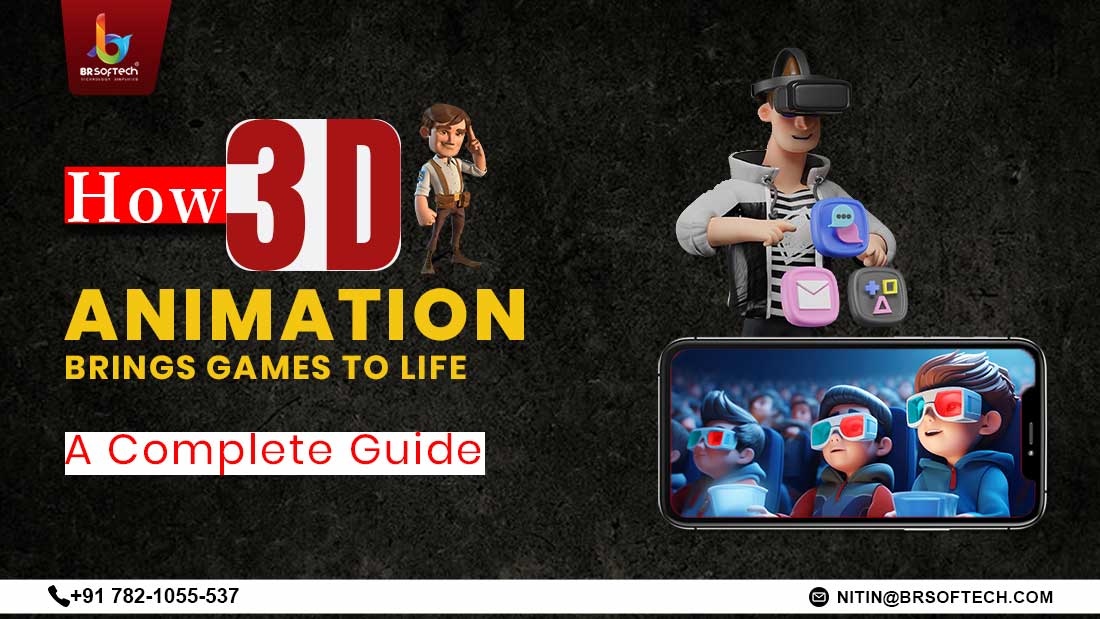In the ever-evolving world of gaming, keeping players on the edge of their seats is a constant challenge. Developers strive day in and day out to innovate ways to enhance the gaming experience for the players, and one such innovative way in game design is procedural level generation.
When talking about HTML5 games, procedural generation can completely revolutionize the way difficulty levels are developed, offering players an infinite and ever-evolving gameplay experience. While developing puzzle games, action-packed adventures, or strategy games, knowing the importance of procedural level generation is necessary for a developer to create dynamic content and keep players on their toes.
What is Procedural Level Generation?
Procedural level generation (PLG) is an algorithm that creates unlimited levels and missions in a game having elements like maps, levels, or environments, based on predefined parameters and rules. In traditional game development, developers design each level or environment manually, conversely, procedural generation uses code that creates content indefinitely.
For example, instead of designing a static, predefined set of levels for a game, procedural generation enables the creation of unique and randomized levels every time the player progresses. This randomness not only adds variety but also ensures that no two gameplay experiences are ever the same.
How Does Procedural Level Generation Work in HTML5 Games?
In HTML5, procedural level generation utilizes the game’s core engine like JavaScript or Canvas API to create rules determining how the game environment or levels are modified as a player makes progress in the game. Procedural level generation can work in different aspects of the game, for example:
Random placement of obstacles or enemies
The code is written in a way that you get obstacles randomly. For example, in games like Subway Surfer and Temple Run, PLG is responsible for the obstacles in the game.
Varying level sizes and difficulty
As you progress in a game that uses PLG, you experience the level size getting elongated and it gets a bit difficult as you move to new levels. This is the work of PLG.
Other areas
Other aspects of PLG are seen in dynamic terrain generation like mountains, valleys, etc, and environmental changes based on player progress or time are also an effect of PLG
The beauty of procedural generation in HTML5 lies in its adaptability. Developers can set parameters that create endless possibilities for level design, making it ideal for games where players expect constant challenges and new experiences.
How to Integrate Procedural Level Generation Algorithm in HTML5 Games
Procedurally generated games in HTML5 may pose an intricate task in the beginning, however, with the right tools and understanding, it is easily achievable. Here are a few steps developers can follow:
Define the Parameters
Defining the parameter is the initial step in guiding you to procedural generation. The game’s difficulty, the types of challenges the player will face, and the overall theme or layout of the levels are included in this step.
Create Algorithms
After setting the parameters, writing algorithms for generating the levels come next. For example, using RNG or Perlin noise algorithms, developers can create random terrain or structures that maintain unpredictability in the game.
Test and Refine
Procedural generation heavily requires testing to ensure the levels are bug-free, engaging, and fun. Playtesting is essential in improving the algorithms to create challenging but enjoyable levels.
Optimize for Performance
HTML5 games are mostly developed to play over browsers, so performance remains a key aspect. In such cases, optimization of procedural generation is a must to ensure smooth gameplay, especially when generating levels in real time.
Benefits of Procedural Level Generation in HTML5 Games
There are several benefits of using Procedural Level Generation in HTML5 game development, users get features like endless levels, and developers enjoy reduced development time through this algorithm.
Endless Replayability
Through procedural generation, a level of unpredictability comes into play which allows players to encounter different experiences every time they play the game. Contrary to orthodox development, where levels are pre-determined, players can keep coming back for more in HTML5 games thanks to its new challenges and scenarios.
Reduced Development Time
Rather than designing every single level manually, developers can use algorithms to automatically generate content. This speeds up development time, reduces the risk of repetitive gameplay, and lowers the cost of game production.
Increased Player Engagement
Games with procedurally generated content tend to grab more attention because of their element of surprise. Players are encouraged to explore every corner of the game world, knowing they will likely find something new with each playthrough.
Scalability
It becomes easier to add new content through procedural generation. Developers can enjoy expanding the environment without even creating levels manually. This feature significantly lowers the workload of developers without compensating quality.
Games which are taking the benefits from Procedural Level Generation
Listed below are some of the successful examples of HTML5 games that leverage procedural generation to provide gamers with an unmatched experience:
Endless Runner Games
Games similar to Subway Surfers and Temple Run, the prominent endless runner games, use procedural generation to create random obstacles and path layouts that seem fresh and advance in difficulty as you cross levels. Each playthrough is different to ensure player engagement, eventually helping entrepreneurs possess more opportunities in generating revenue.
Dungeon Crawlers and Roguelikes
The Binding of Isaac and Spelunky create randomized dungeons by using PLG. In HTML5, endless variety is offered by developers as they use PLG algorithms to generate dungeon layouts that evolve every time the player commences a new game.
Puzzle Games
Games like 2048 and Sudoku can have endless levels if developed through procedural level generation. For example, in Sudoku games or puzzle challenges the layout or difficulty changes dynamically as players progress in the game.
Challenges of Procedural-Level Generation
While procedural generation brings many benefits, it’s not without its challenges. Some of the common issues developers may face include:
Balancing Complexity and Playability
Creating randomized content with a mix of both i.e., fun and challenging can be difficult. If the algorithm generates content that is too complex or utterly easy, it can lead to frustration or boredom for the player, hence, balance is necessary.
Ensuring Consistency
While randomness is required, shifting the game towards a random world might result in strange or nonsensical levels. Therefore, developers must find a balance between randomness and a logical, cohesive game environment.
Create Endless Worlds with BR Softech
For players to stay engaged in dynamic content that promotes unpredictability, developers must leverage procedural level generation in HTML5 game development.
At BR Softech, we believe in leveraging PLG to create immersive, high-quality games that are balanced and stand out in today’s competitive gaming market. Whether it’s a simple endless runner or a complex strategy game, BR Softech has the expertise to understand your idea and turn it into reality. Are you ready to take your game to the next level? Contact us to get started.
Let’s Create Something Amazing Together
With years of experience and a team of seasoned experts, we bring your gaming vision to life with precision and innovation.
Conclusion
Procedural level generation is an important algorithm when creating an endless game in HTML5. It is obvious as well because no developer can manually create an infinite set of levels for users.
FAQs (Frequently Asked Questions)
What is Procedural Level Generation? Procedural level generation is an algorithm used to generate game levels automatically, based on predefined rules and parameters. This results in dynamically created content, offering players a fresh experience every time.
How do I start using procedural level generation in my HTML5 game? Procedural level generation implementation starts with defining the parameters of your game’s levels. You must write algorithms to generate the content, test it thoroughly, and optimize for performance to ensure a smooth experience.
What are the benefits of using procedural generation in HTML5 games? Endless replayability, low development time, enormous player engagement, and scope for adding new content over time without additional manual work are some of the benefits of using procedural generation in HLTML5 games.
Can I apply procedural generation to mobile games? Yes, procedural generation can be optimized in mobile games, you can use HTML5 to develop games that are compatible with both web and mobile platforms, ensuring a broad reach.
How does BR Softech handle procedural-level generation? At BR Softech, our developers create customized procedural generation algorithms that match the game’s requirements. We ensure the levels are fun and challenging, and keep the players engaged.












